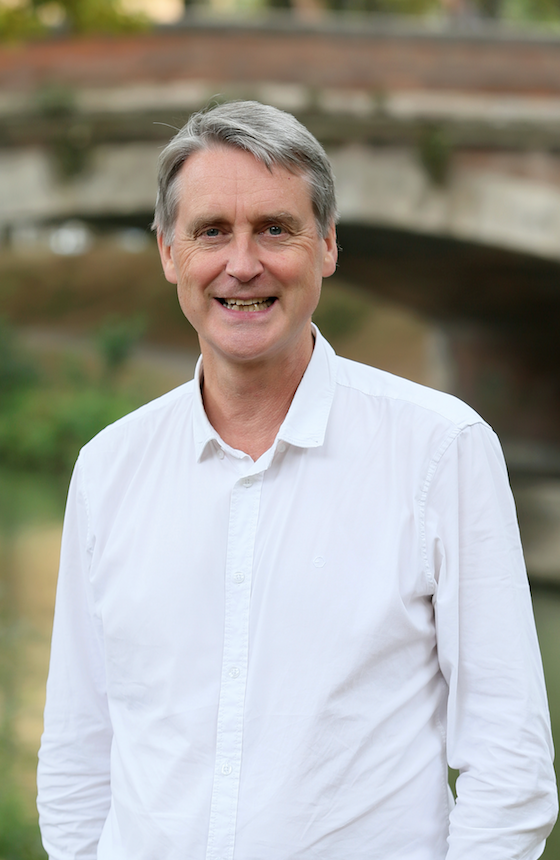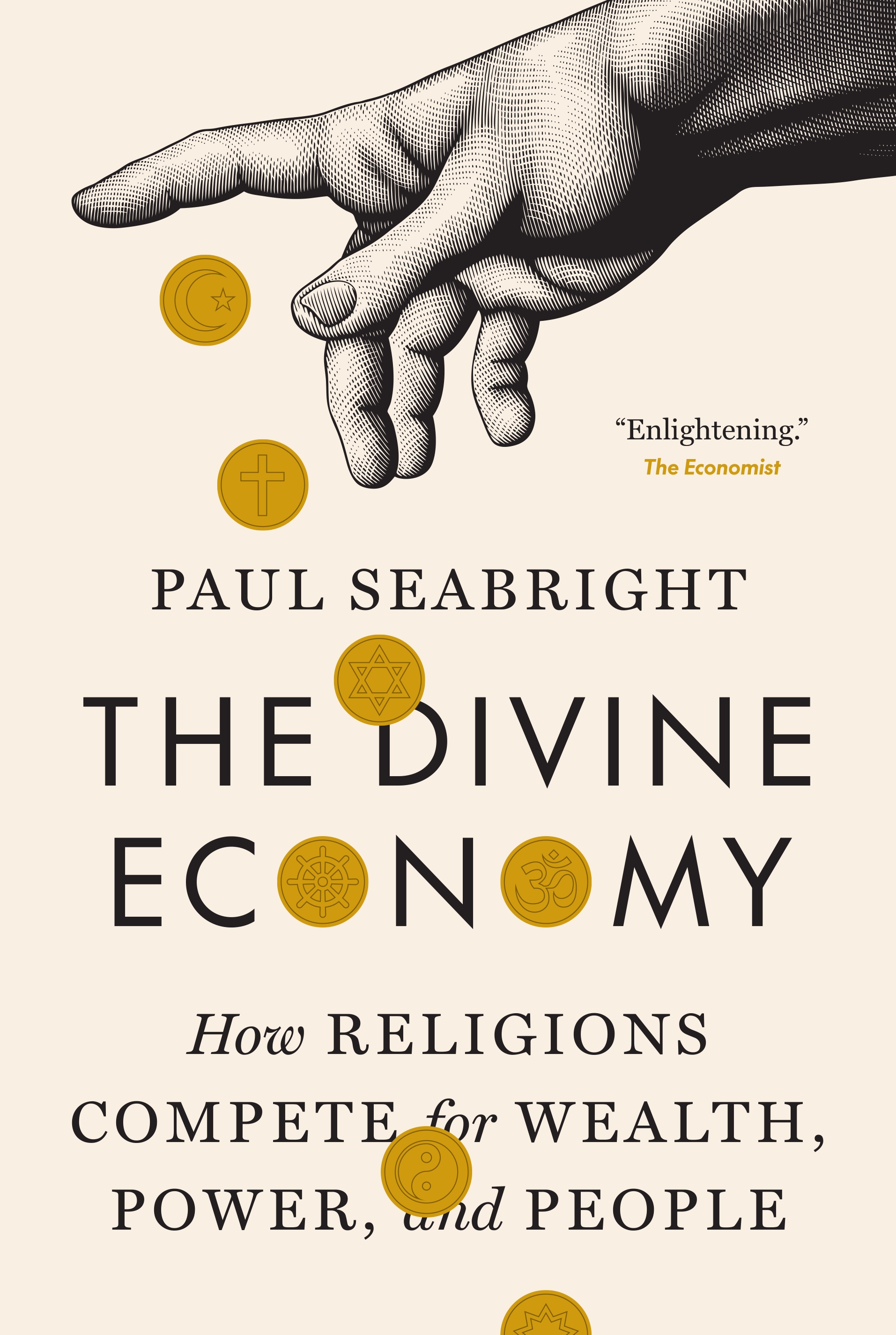
Economic approaches to studying religious trends have been prominent for the past three decades, but Paul Seabright’s recent book, The Divine Economy: How Religions Compete for Wealth, Power, and People (Princeton University Press, $35), is unique for its comprehensive treatment of the religious past and present as well as its novel use of the concept of “platforms” in explaining the economy of religion. Seabright, who is professor at the Toulouse School of Economics in France, talked to RW about the book and his more recent work in an interview by email in early July.
RW: In your book, you write about religion as being expressed and growing through the way they serve as platforms. Can you explain this concept?
Seabright: Platforms are organizations that facilitate relationships that could not form, or could not function as effectively, in the platform’s absence. Some platforms are digital, like Facebook or Google, which connect different types of users (groups of friends, or firms and customers) more effectively than alternative mechanisms can do. But many platforms are not digital—traditional matchmakers and marketplaces, chambers of commerce, lobbying organizations, and of course religious communities, played a crucial role in building social ties in both traditional rural and modern urban settings.

RW: The secularization thesis has undergone something of a revival in recent years. But throughout your book you write that religious platforms have some advantages over secular ones. So would this challenge those forecasting a secular future?
Seabright: Definitely! The secularization hypothesis has tended to appeal to people who think the main characteristic of religious movements is their attachment to systems of beliefs that are in conflict with modern science. In fact, most religious platforms offer their members a set of services that are mostly about community and belonging and only very indirectly about beliefs. This makes them very adaptable. Religious movements are not passively retreating before the changing demands of modern life, but reinventing themselves to provide the benefits of community that their secular rivals often struggle to convey.
RW: Since religious affiliation and religious organizations are seeing decline in the U.S., does this suggest that religious platforms in America will be weaker than elsewhere?
Seabright: No. Religious affiliation is seeing a decline in the U.S. from an unusually high level of affiliation, which remains high by the standards of high-income countries. Also, the decline in religious affiliation is not accompanied by an equivalent decline in belief in God or in general spirituality. This suggests that many Americans are moving towards a more “mix-and-match” approach to spirituality. At the same time, others are heeding the call from megachurches, which are attracting a growing share of Americans. In short, the religious landscape is becoming more diversified—much like the rest of American society. In any modern society where people are free to choose their religious activity, we can expect that a significant minority will feel no need for the offerings of religious platforms. But many, perhaps most others, will continue to heed the call of religious platforms, in the U.S. no less than elsewhere.
RW: The economic approach to religion has stressed how the demand for religion remains steady while changes on the supply side (such as because of state regulations) affect the fortunes of religious institutions. How does your religious platforms approach deal with supply and demand?
Seabright: Supply is provided by platforms, as I’ve indicated—though platforms can be very varied, some small and local, others large and national or international. Demand is for a range of activities that give people a sense of meaning through involvement in community. That meaning may depend on specific beliefs, or more generally on moral teachings, or on spiritual narratives that help people to make sense of their place in the larger universe, and to reconcile themselves to the disappointment and suffering that is an unavoidable part of the human condition. One of the most important insights of many religious platforms is that the high demands made of their members are not a bug but a feature: their members value being asked to contribute to the community, even or especially when those contributions are large enough to hurt.
RW: You also tie the success of religious platforms to how their members and leaders relate to political authorities.
Seabright: Historically, many religious movements have obtained great privileges from the support and sponsorship of political leaders. But Adam Smith’s profound insight in Book Five of The Wealth of Nations was that this political support was nearly always detrimental to the movements’ ability and incentive to provide what their members wanted. Why should leaders trouble themselves to listen to their members if they have guaranteed incomes from the state, not to mention the ability to stifle criticism through state-enforced religious censorship? Yet if they don’t listen, their legitimacy will suffer.

RW: Given the current geopolitical situation with Iran, do you have any ideas on how the Islamic platform might change in Iran in its relation to political authority?
Seabright: The Iranian people have been turning away from the politico-religious leadership in Iran for several decades. Surveys indicate that Iranians still have fairly high levels of belief in God and in Islam, but their levels of mosque attendance are low—fewer than 40 percent attend a mosque even once a month. The regime has been using increasingly repressive tactics, as we saw in the response to the protests over veiling laws. But the decline in its legitimacy has seemed unstoppable—until the recent bombing actions of the Israeli and U.S. governments provided the regime with a cause to rally the population. Of course, many Iranians will not become supporters of their corrupt and repressive government just because of U.S. and Israeli attacks, but they may be inhibited from speaking out against the regime. The bombing will weaken the regime in some ways, but even if it were to fall the prospect that it would be succeeded by a more liberal and internationally open government has become more remote.
RW: You have been conducting new research on welfare and religion. How does that relate to the relation of politics and religious platforms?
Seabright: In work with my former PhD student Julia Hoefer, we’ve been trying to use comparative cross-country data to see whether political sponsorship of religious movements helps or hurts the movement’s members. We find that it mostly hurts them, and makes them lose trust in the movement’s leaders.